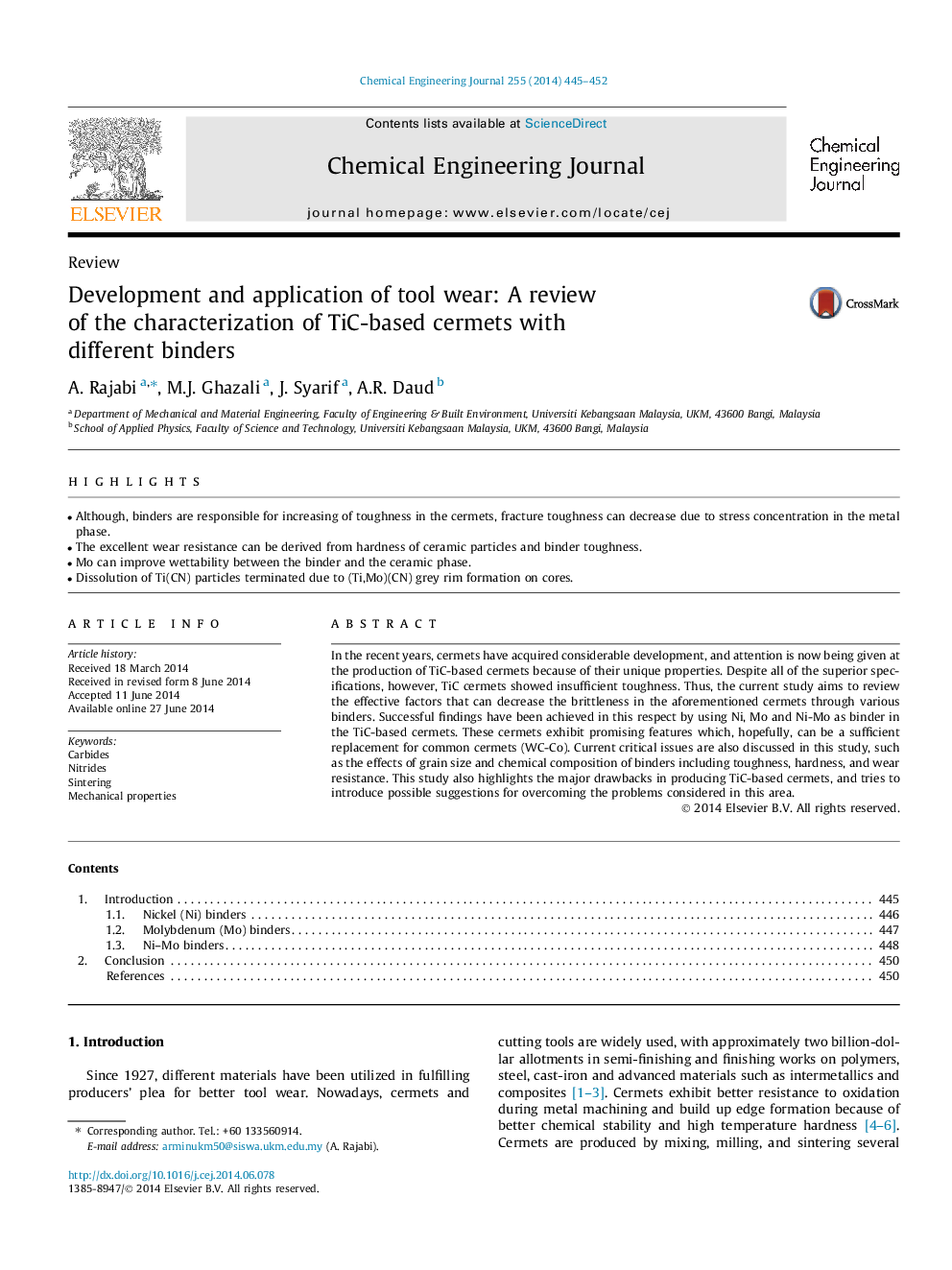| Article ID | Journal | Published Year | Pages | File Type |
|---|---|---|---|---|
| 147039 | Chemical Engineering Journal | 2014 | 8 Pages |
•Although, binders are responsible for increasing of toughness in the cermets, fracture toughness can decrease due to stress concentration in the metal phase.•The excellent wear resistance can be derived from hardness of ceramic particles and binder toughness.•Mo can improve wettability between the binder and the ceramic phase.•Dissolution of Ti(CN) particles terminated due to (Ti,Mo)(CN) grey rim formation on cores.
In the recent years, cermets have acquired considerable development, and attention is now being given at the production of TiC-based cermets because of their unique properties. Despite all of the superior specifications, however, TiC cermets showed insufficient toughness. Thus, the current study aims to review the effective factors that can decrease the brittleness in the aforementioned cermets through various binders. Successful findings have been achieved in this respect by using Ni, Mo and Ni-Mo as binder in the TiC-based cermets. These cermets exhibit promising features which, hopefully, can be a sufficient replacement for common cermets (WC-Co). Current critical issues are also discussed in this study, such as the effects of grain size and chemical composition of binders including toughness, hardness, and wear resistance. This study also highlights the major drawbacks in producing TiC-based cermets, and tries to introduce possible suggestions for overcoming the problems considered in this area.
